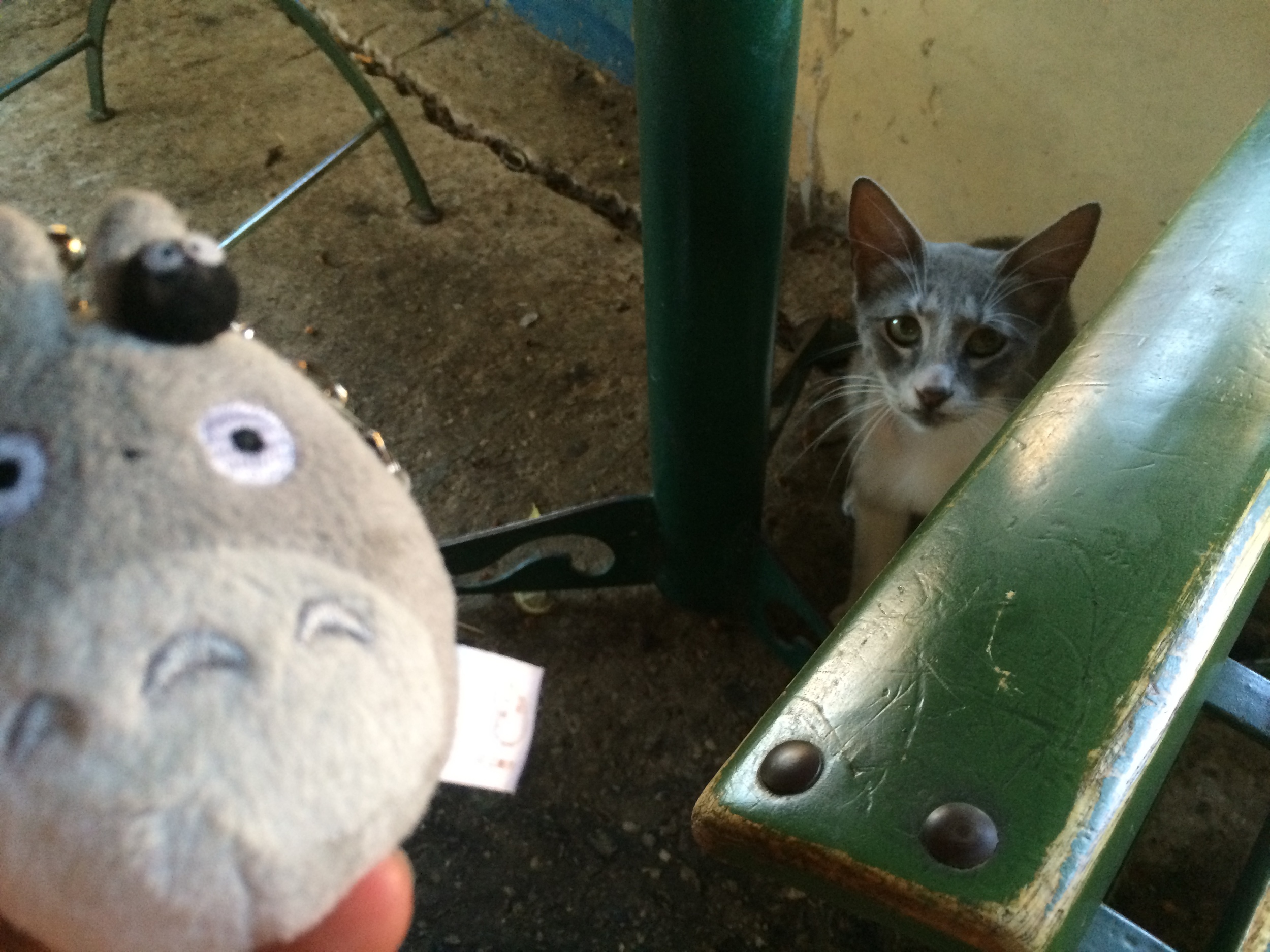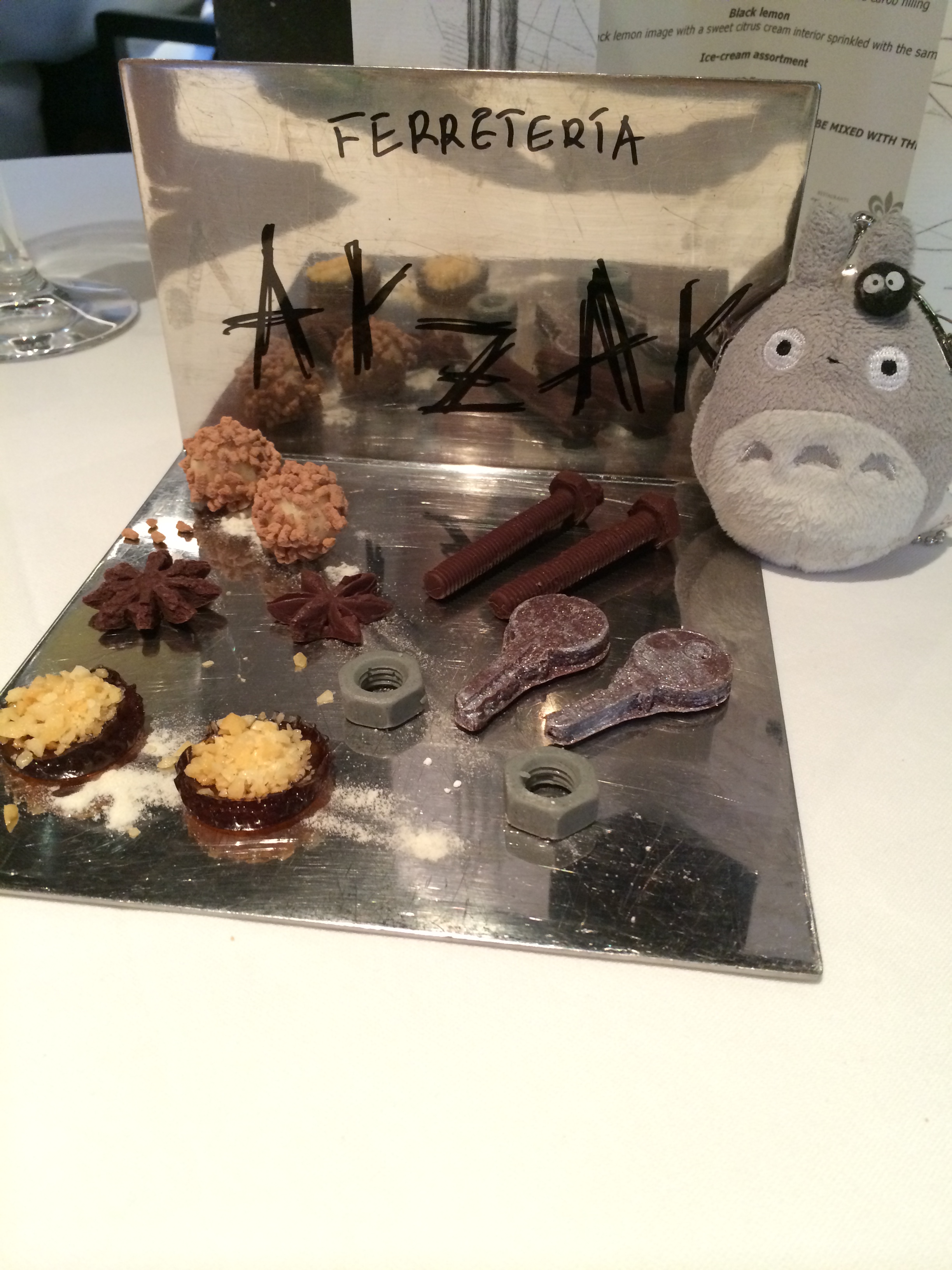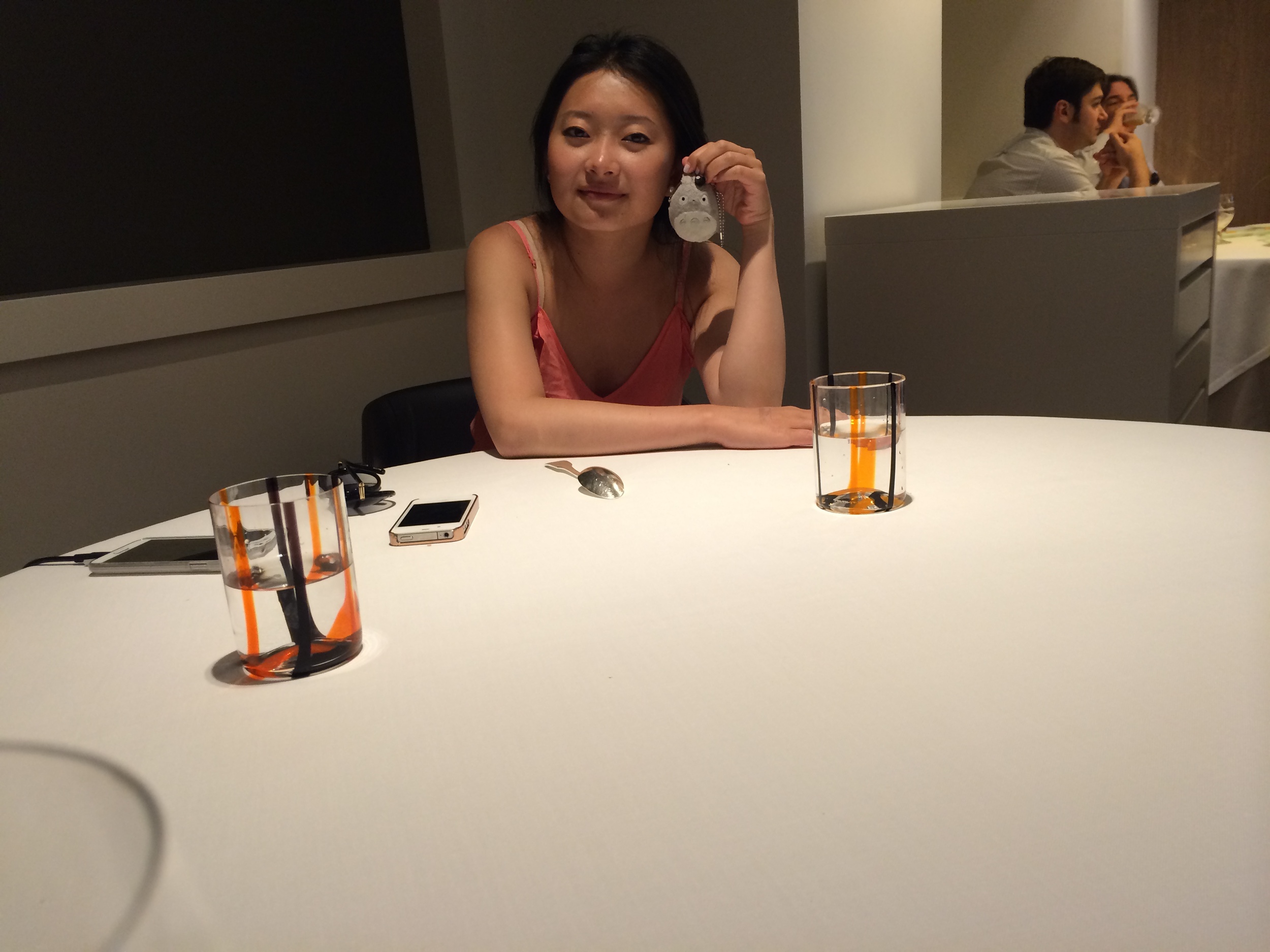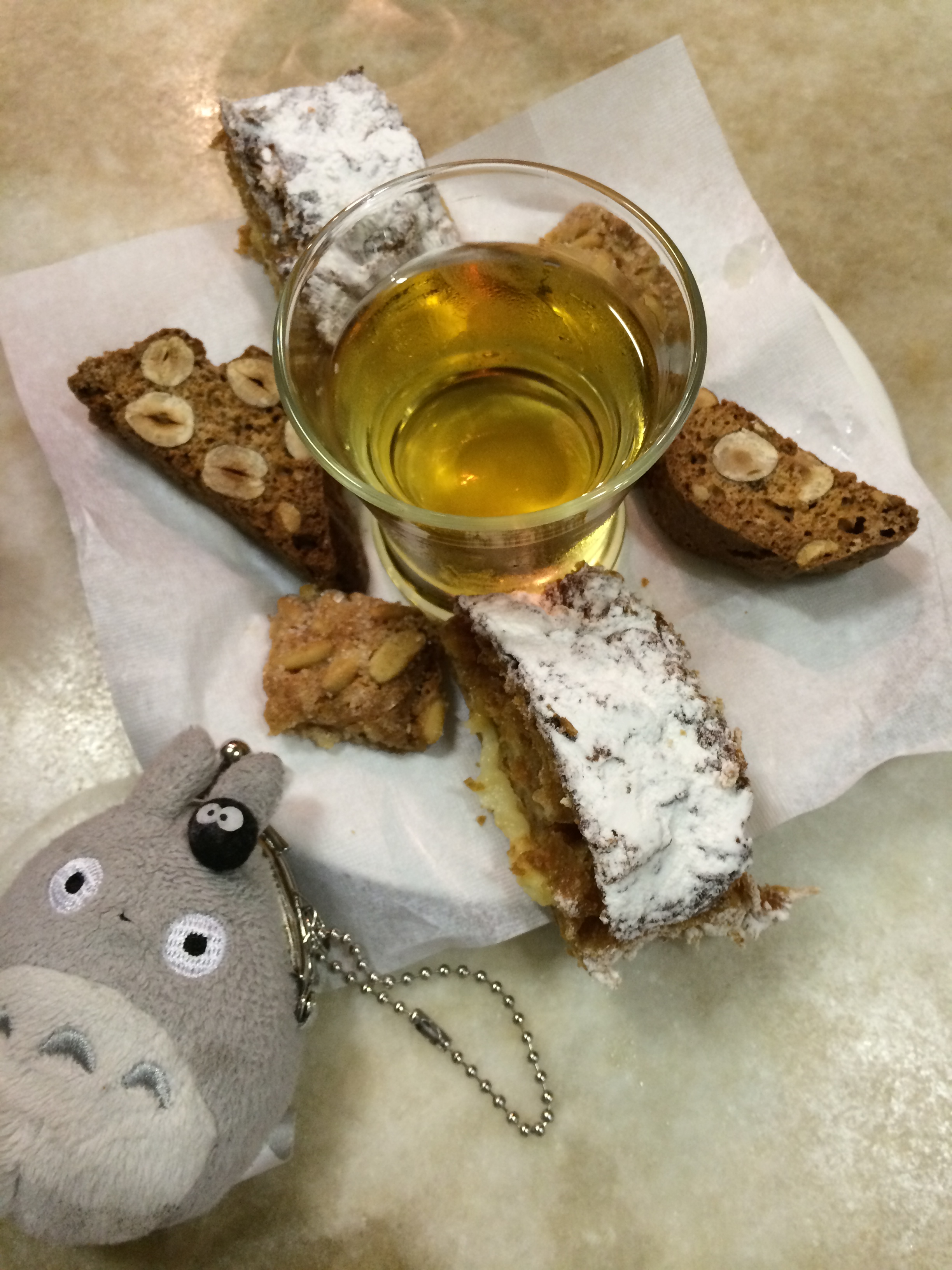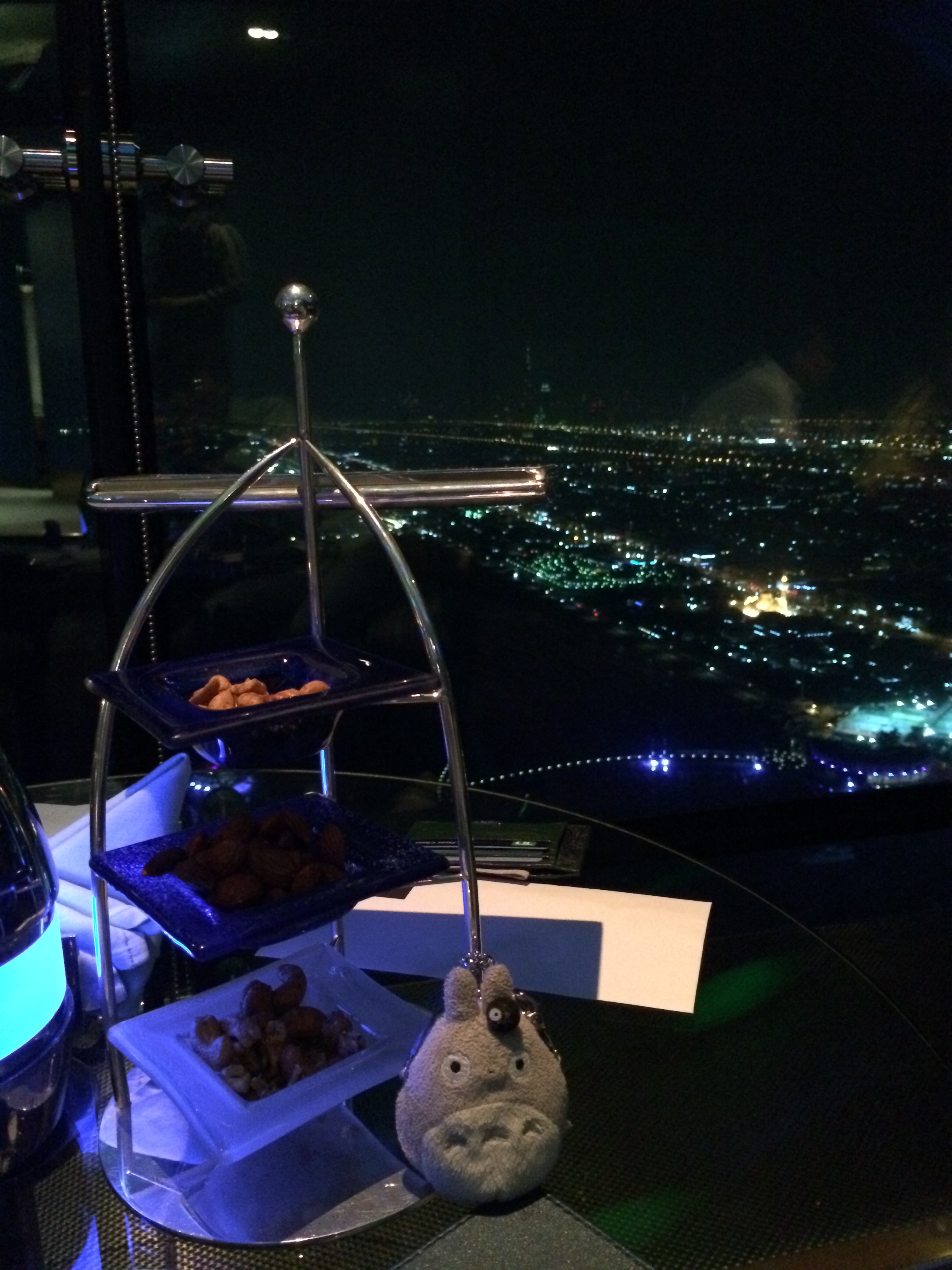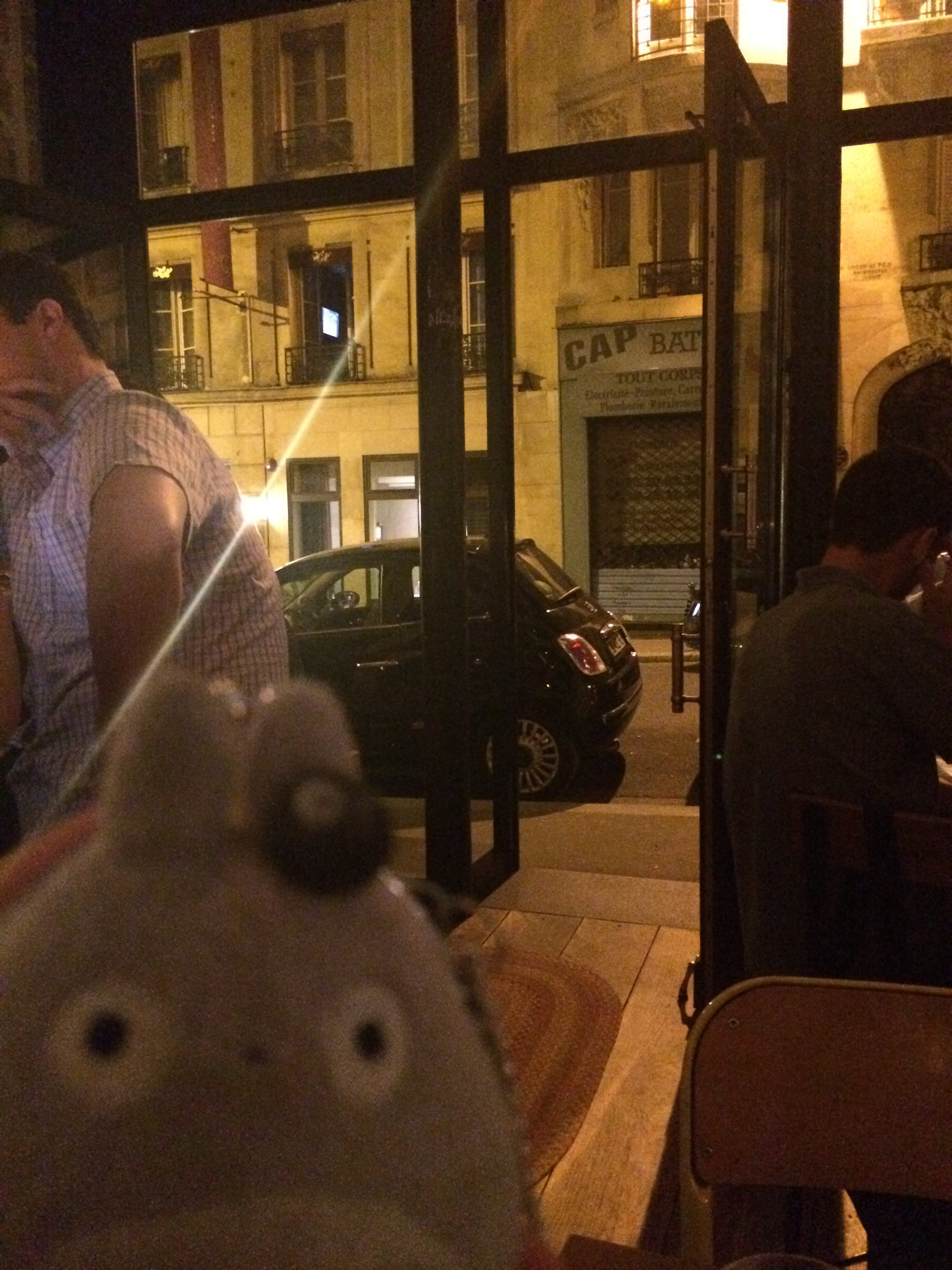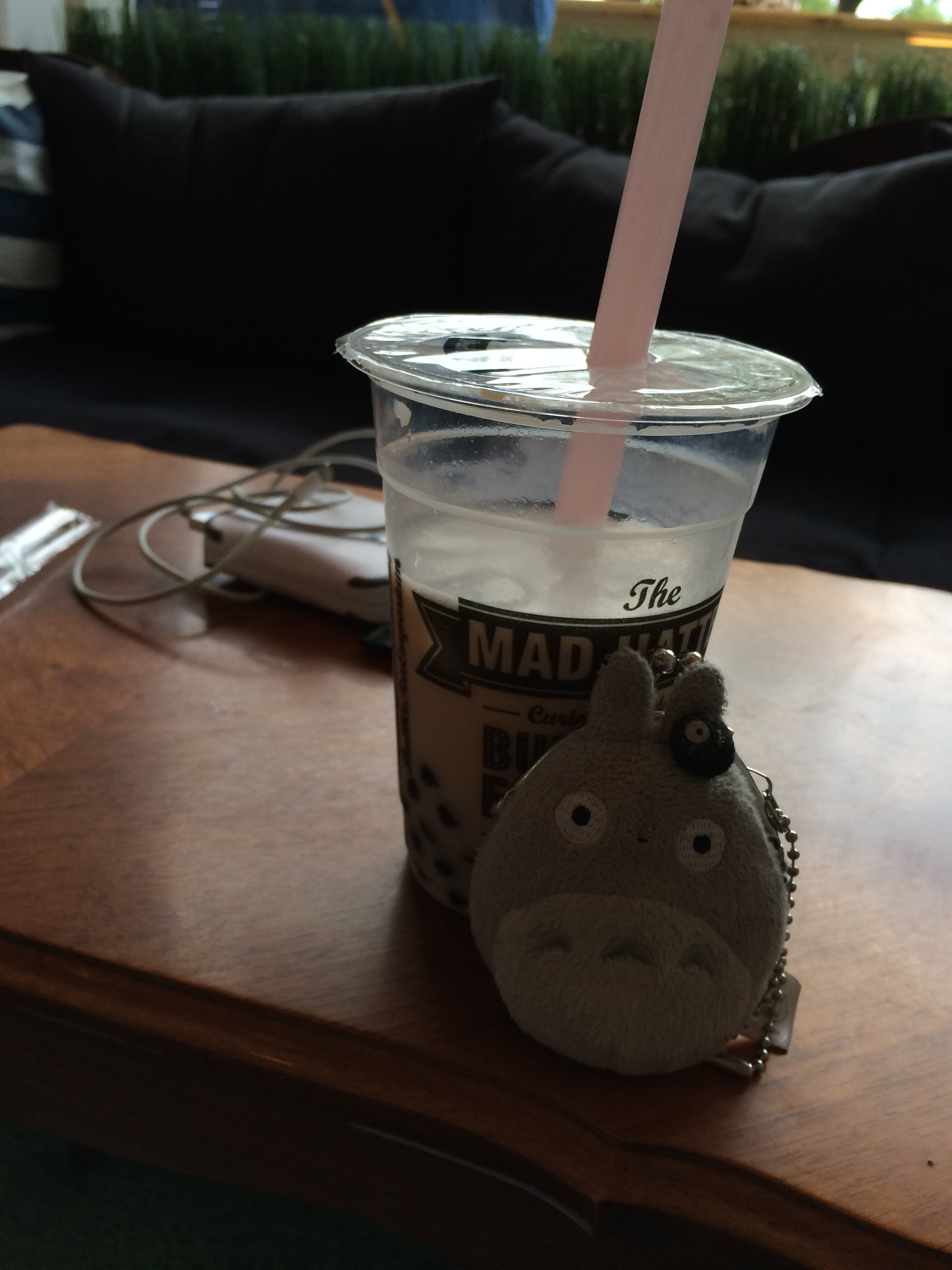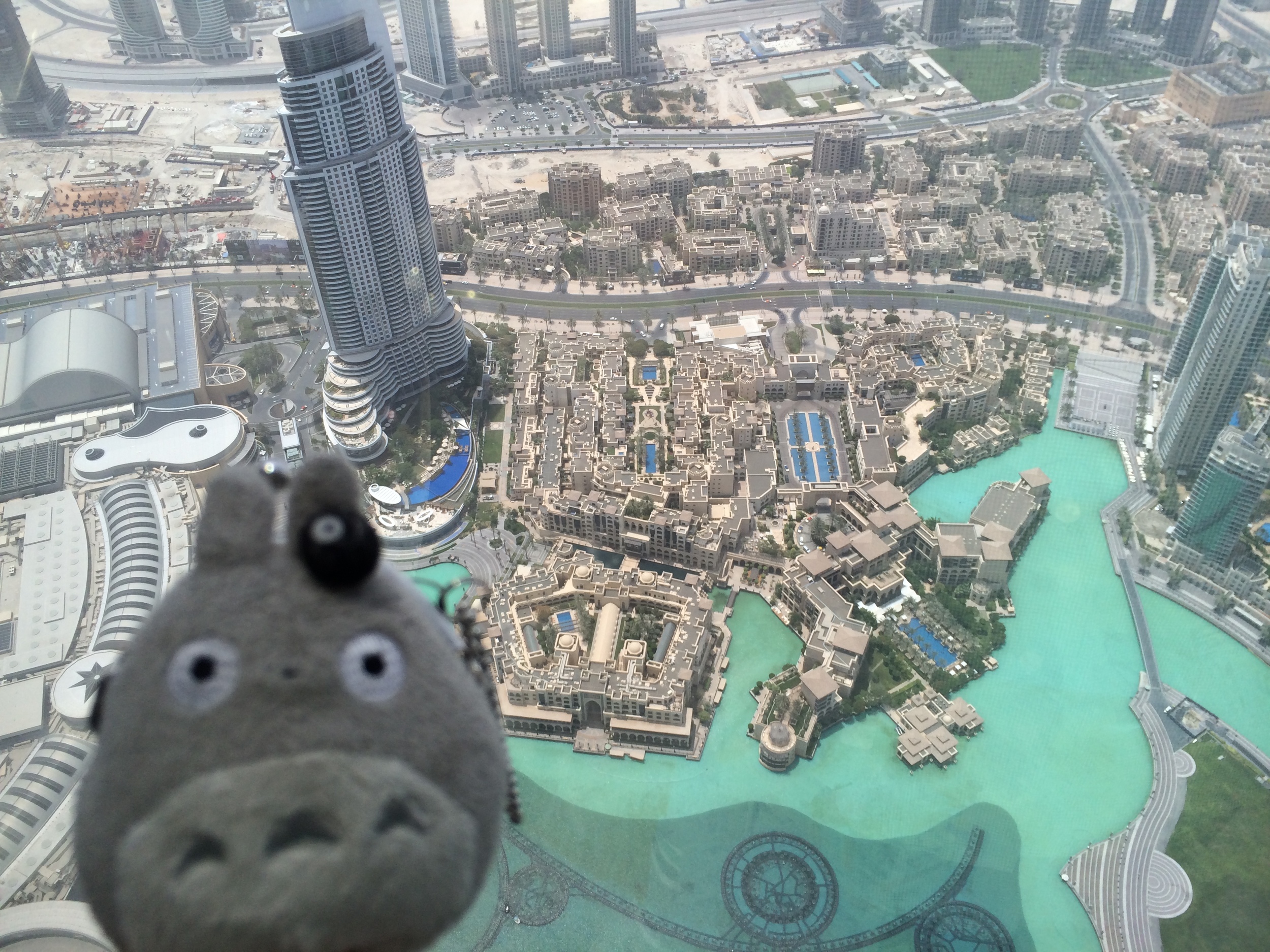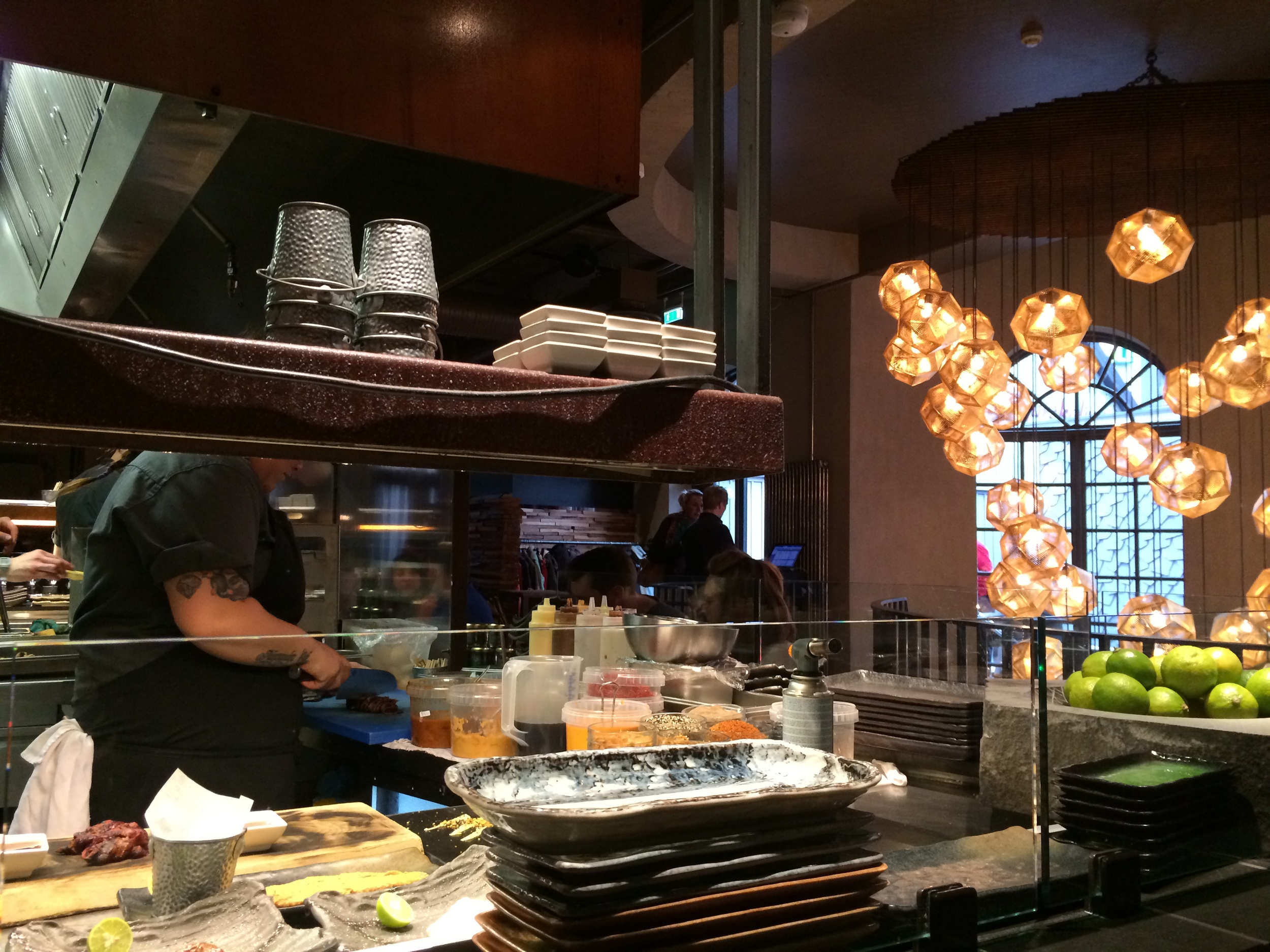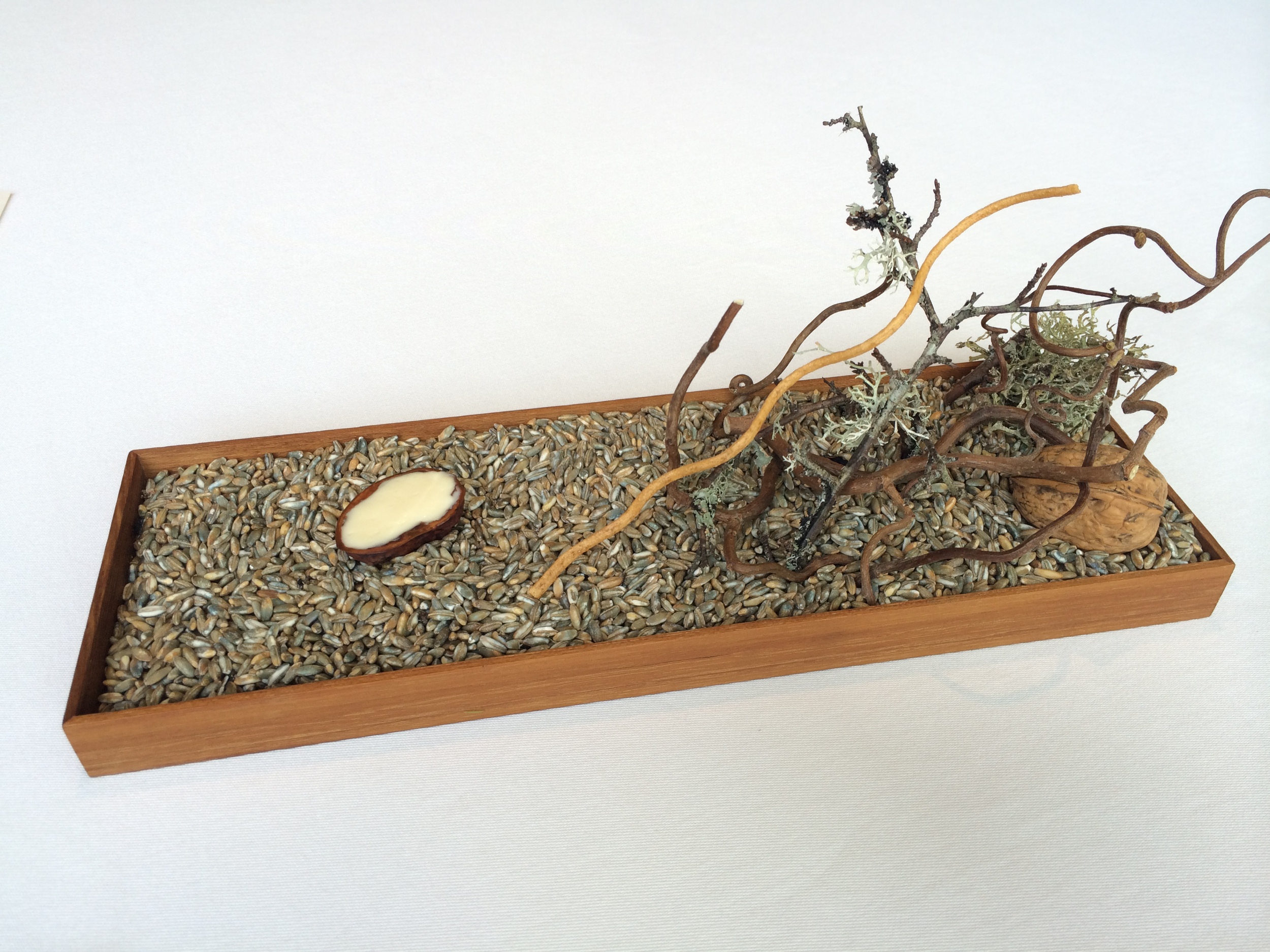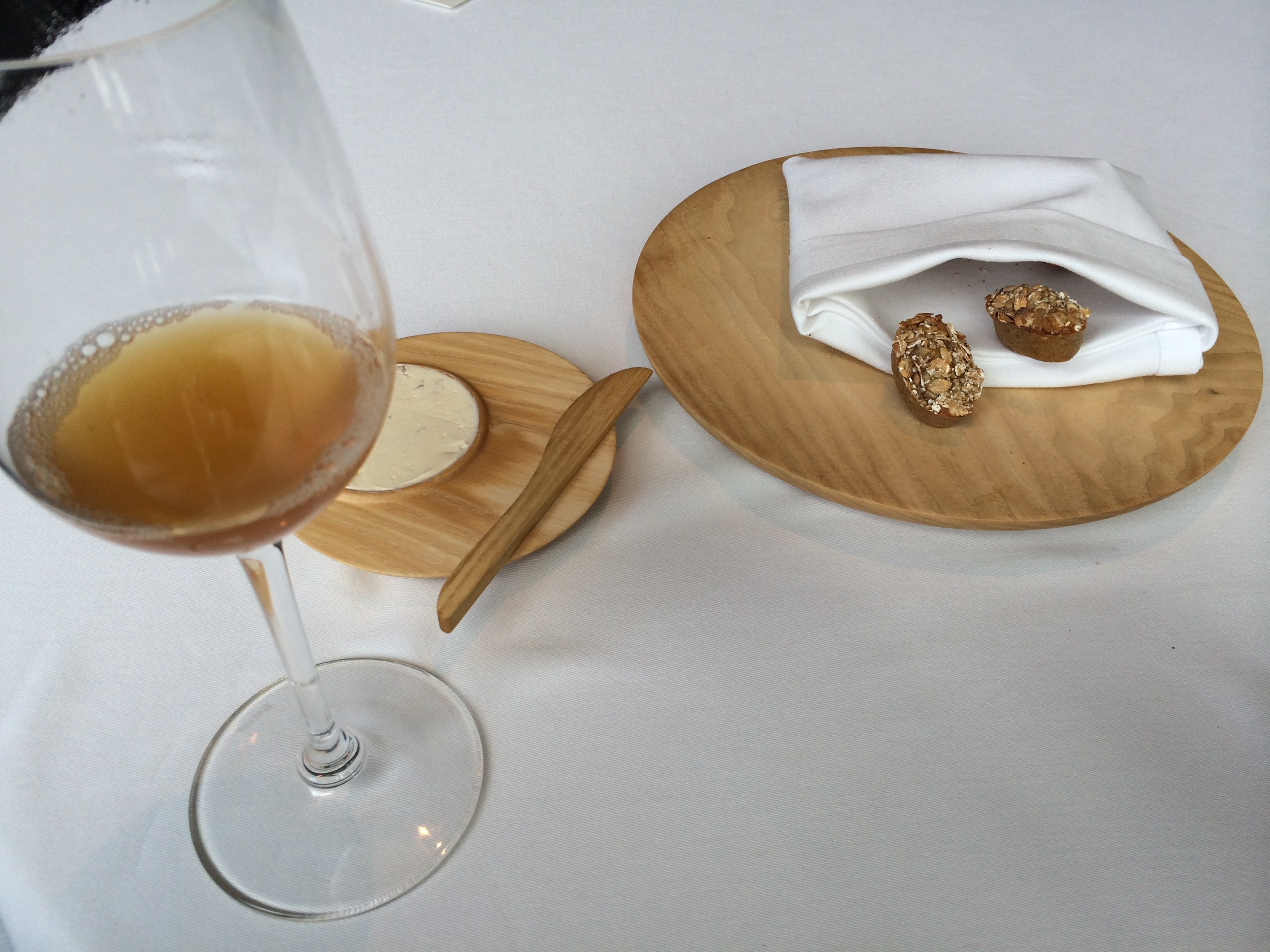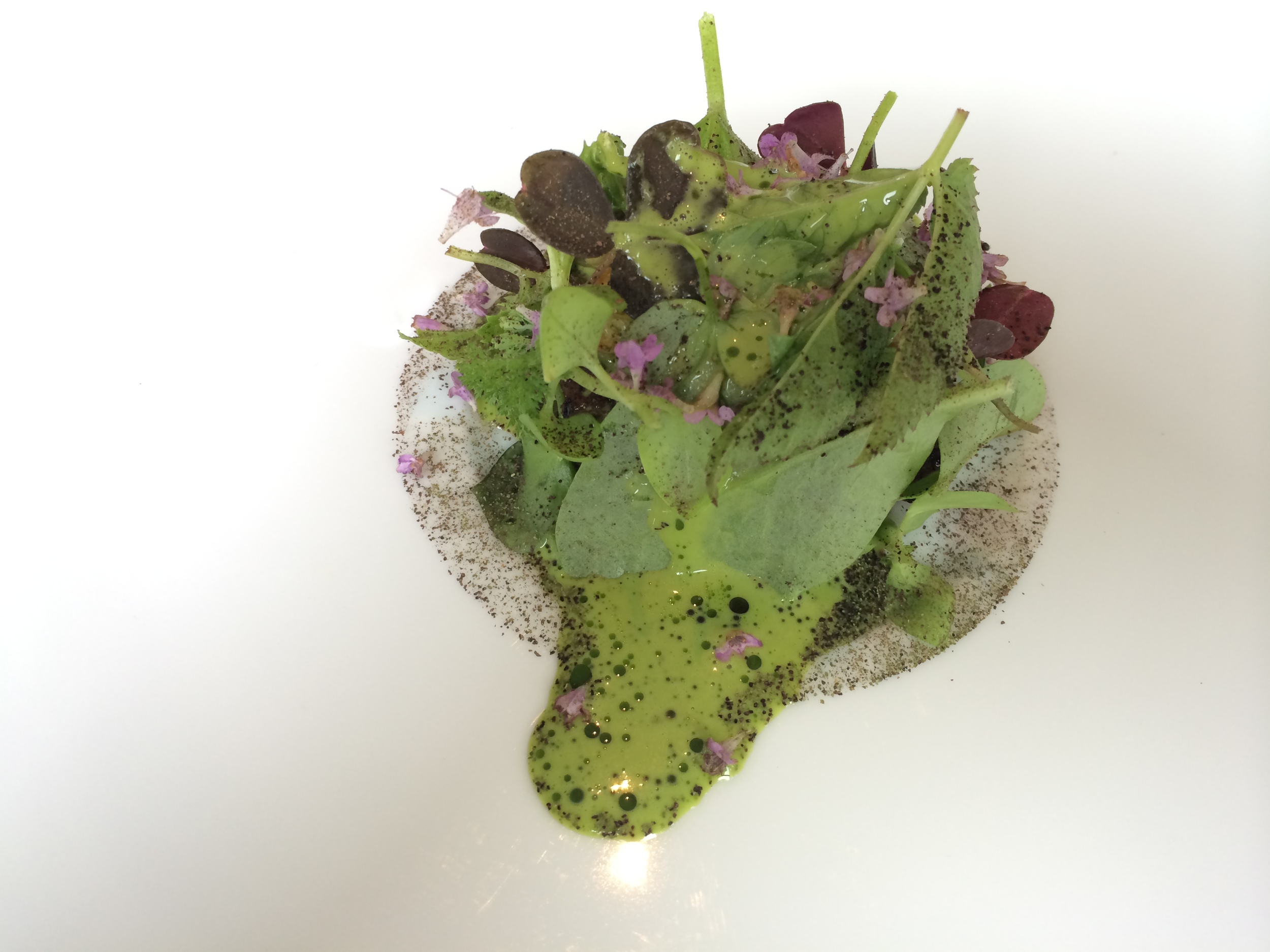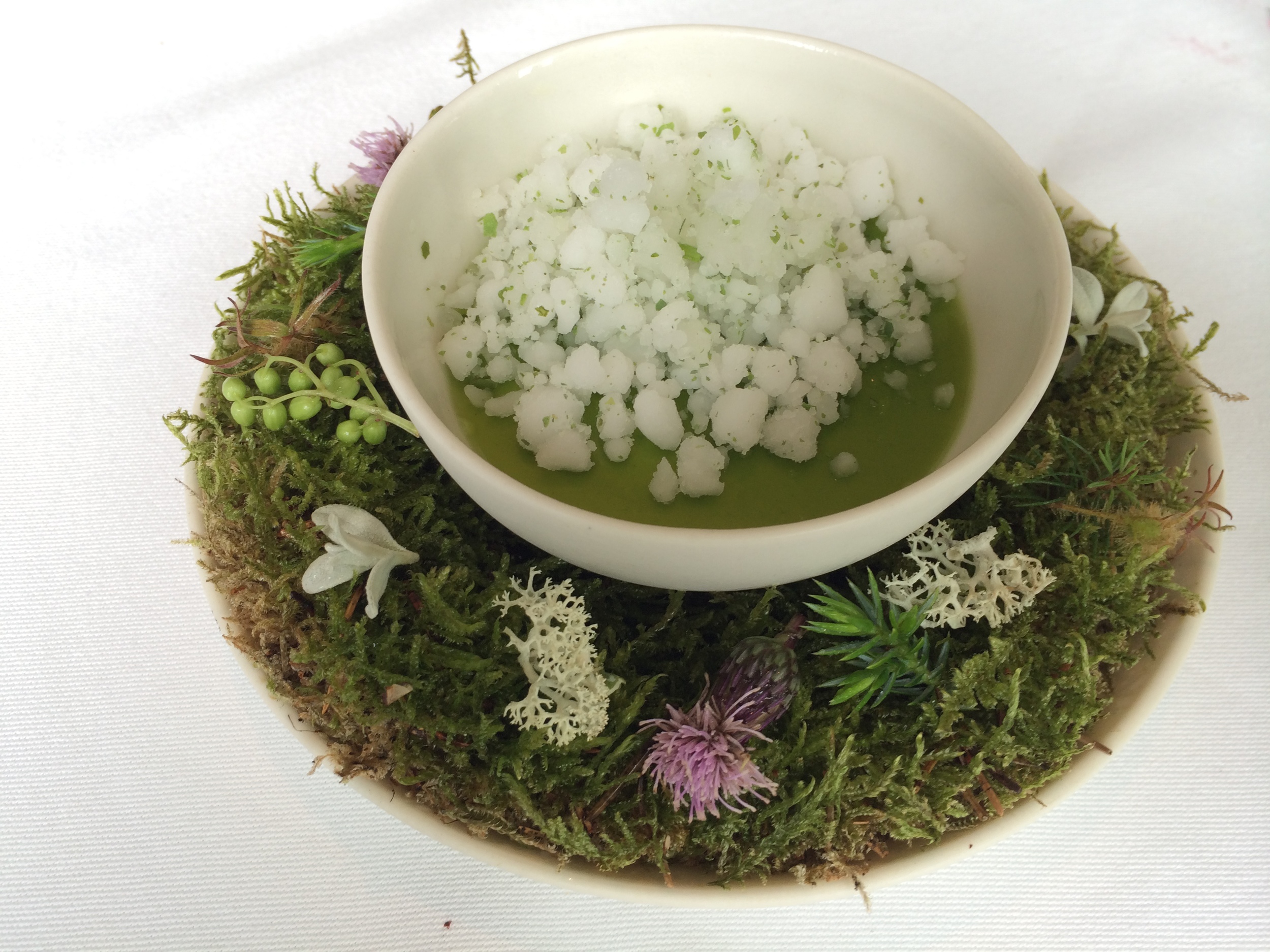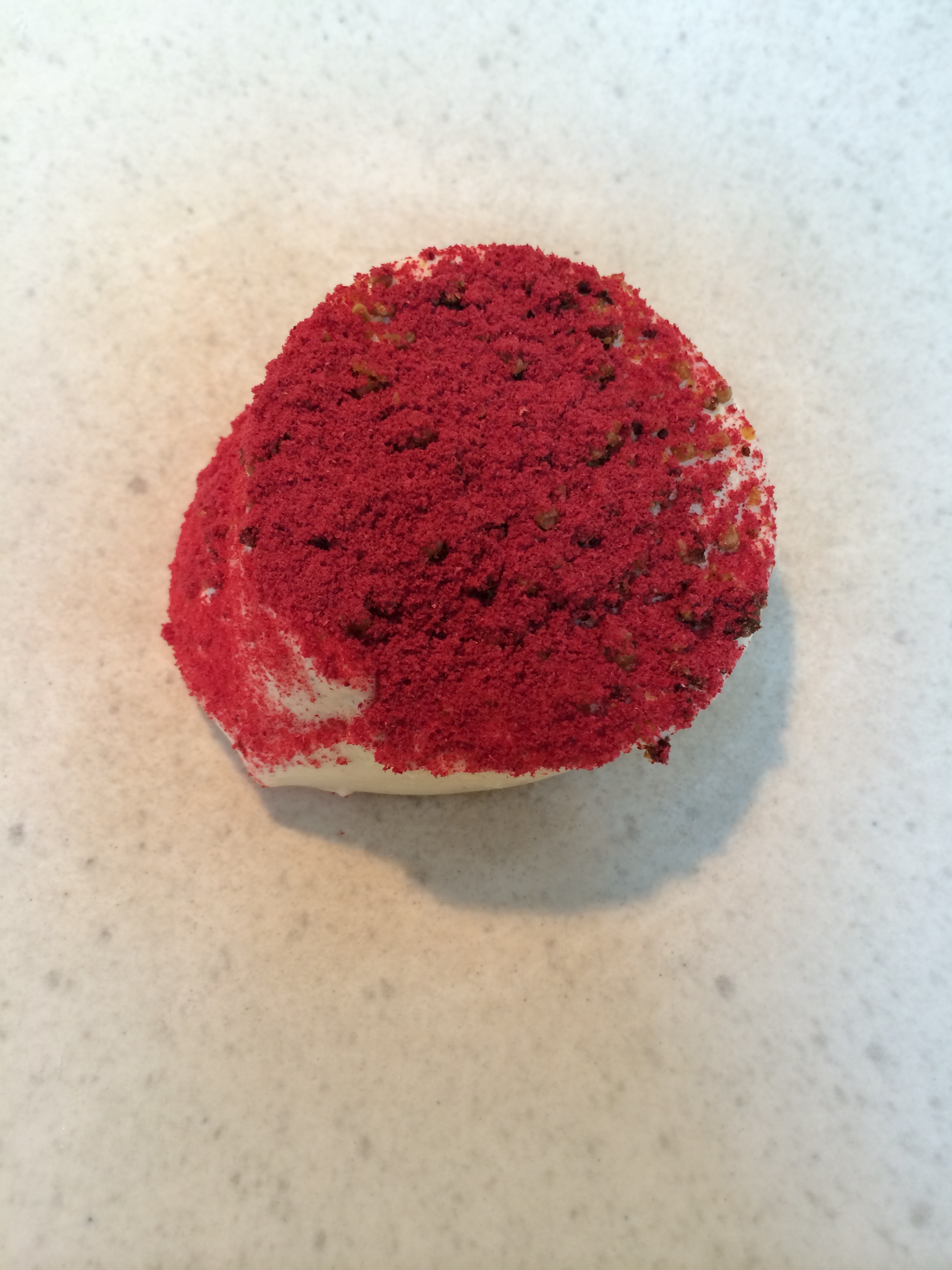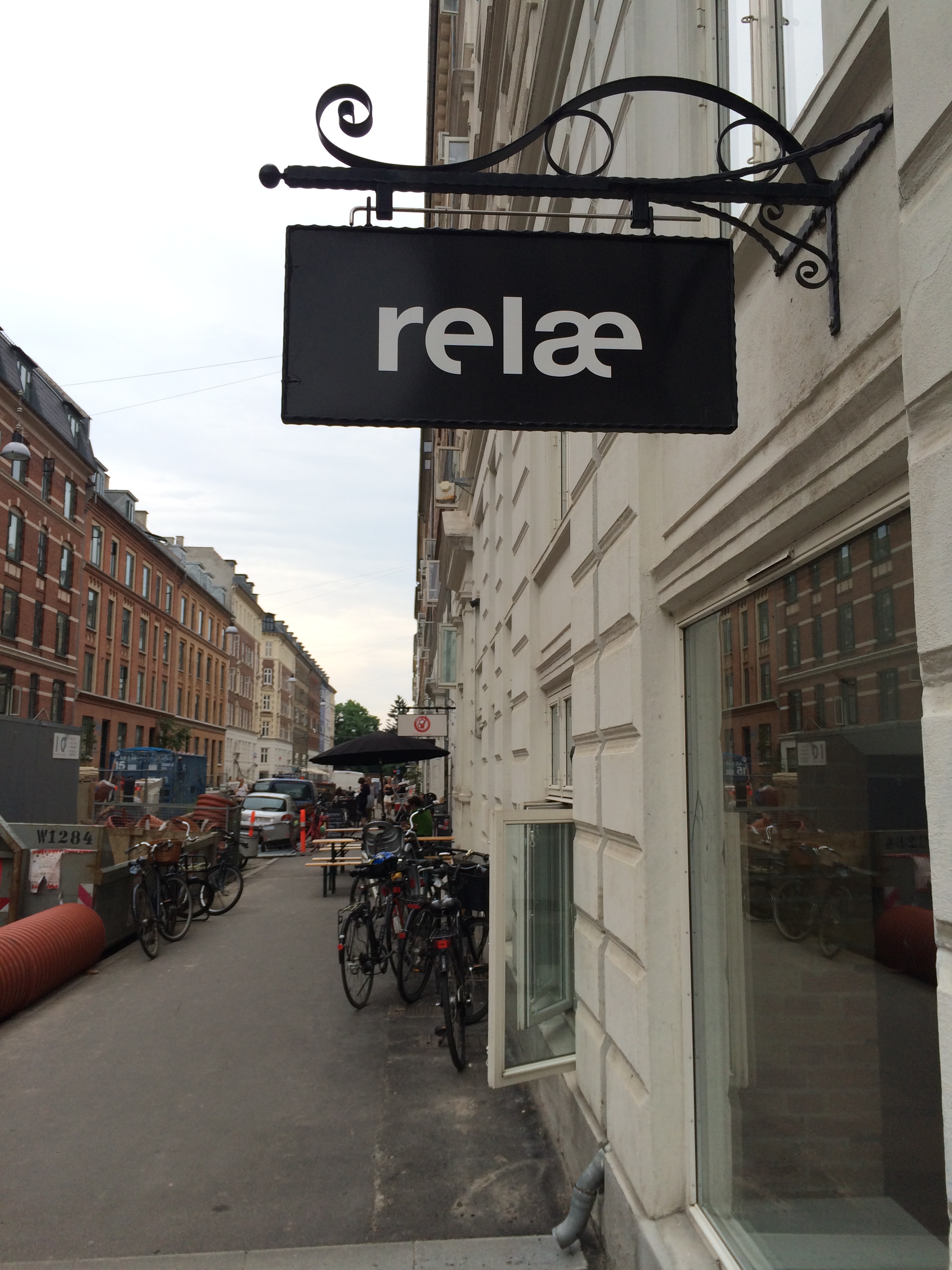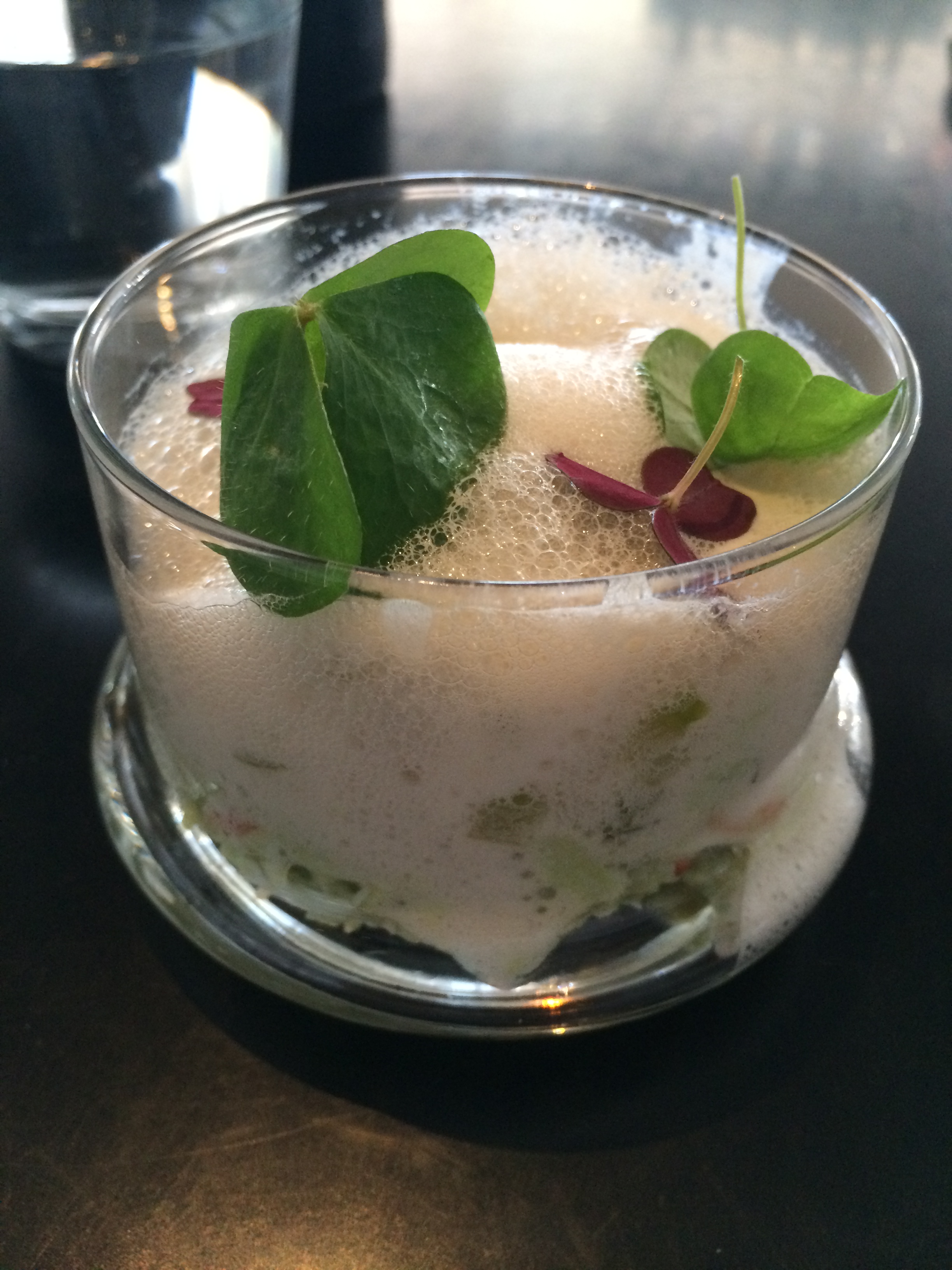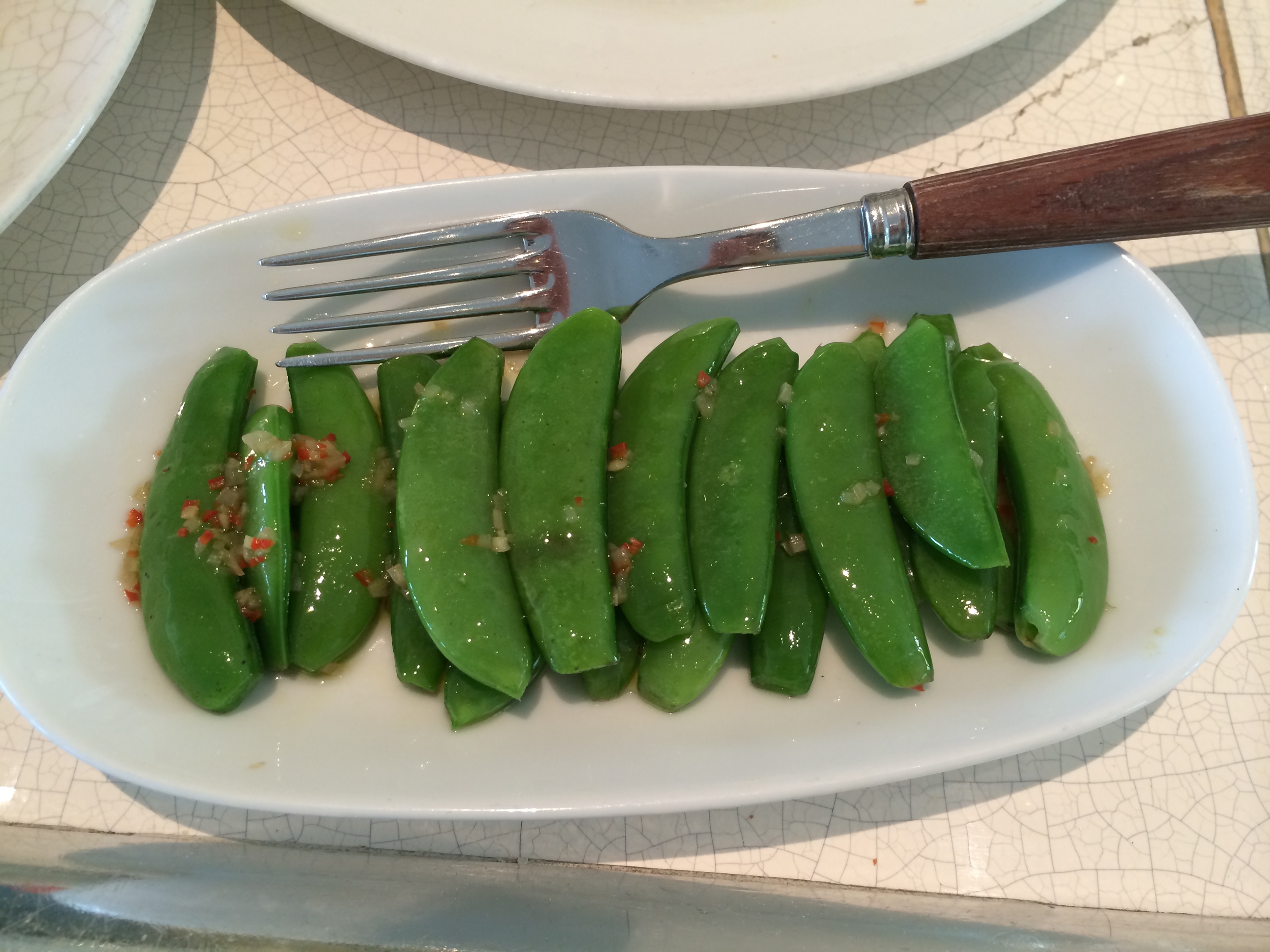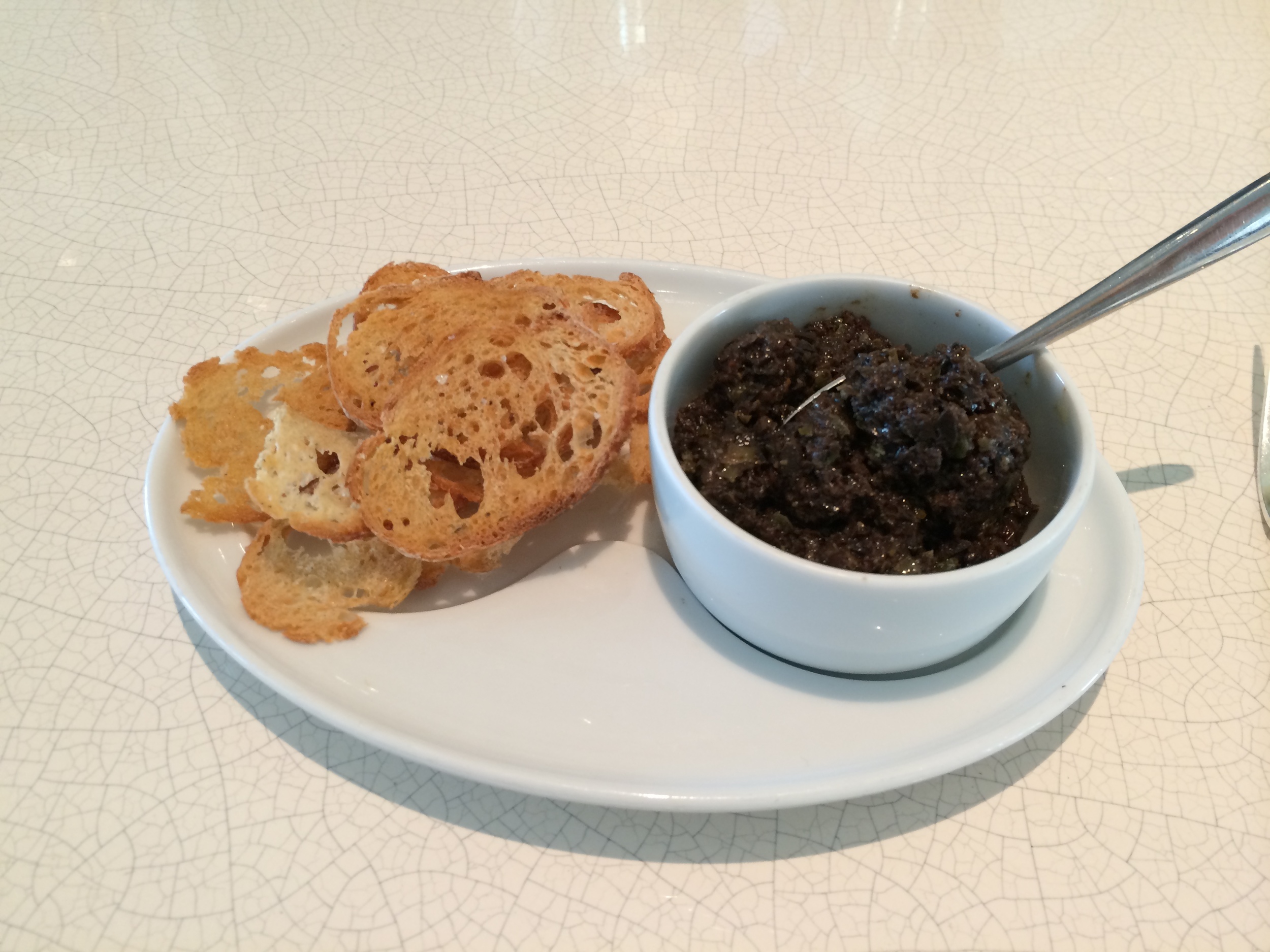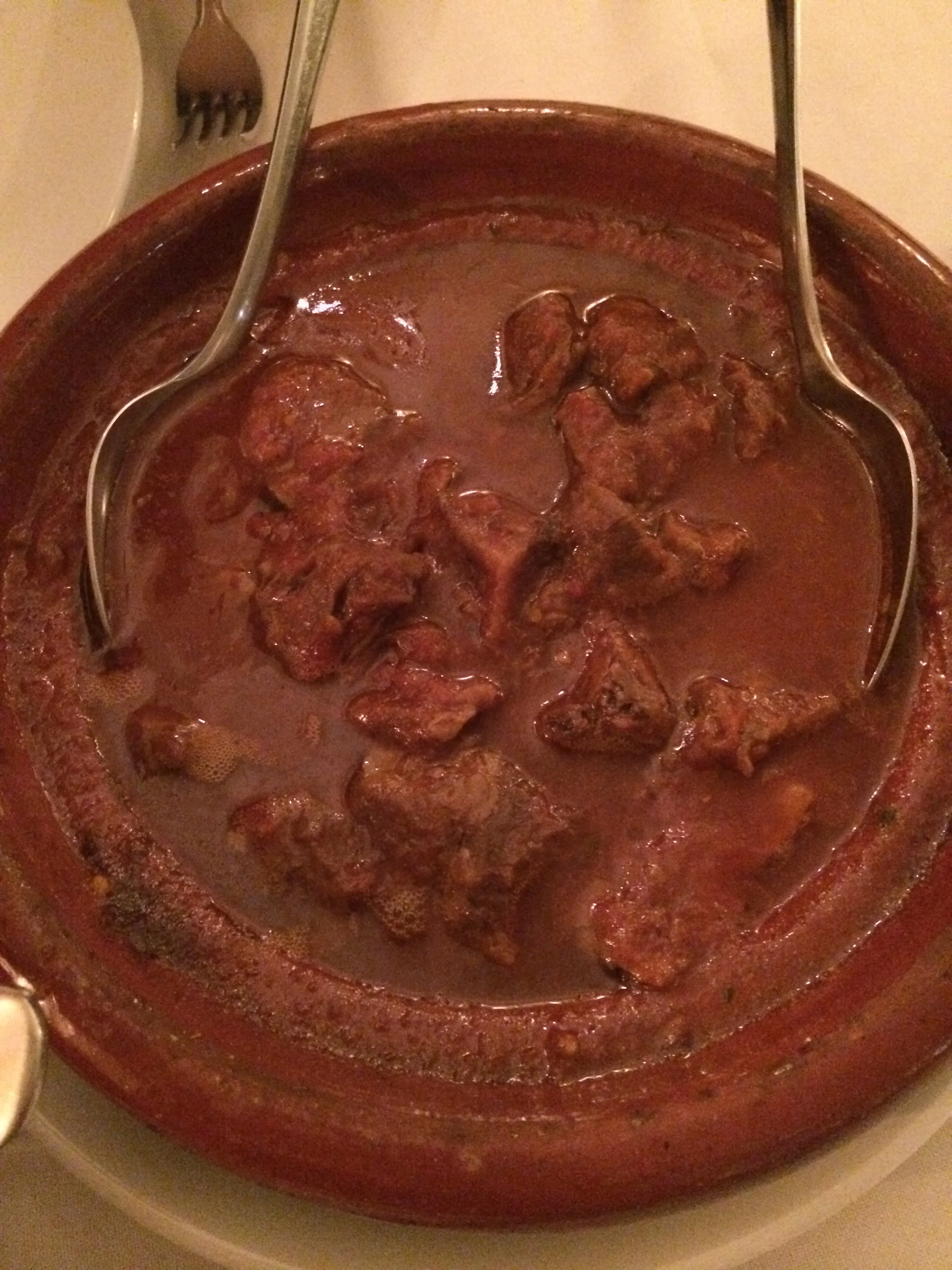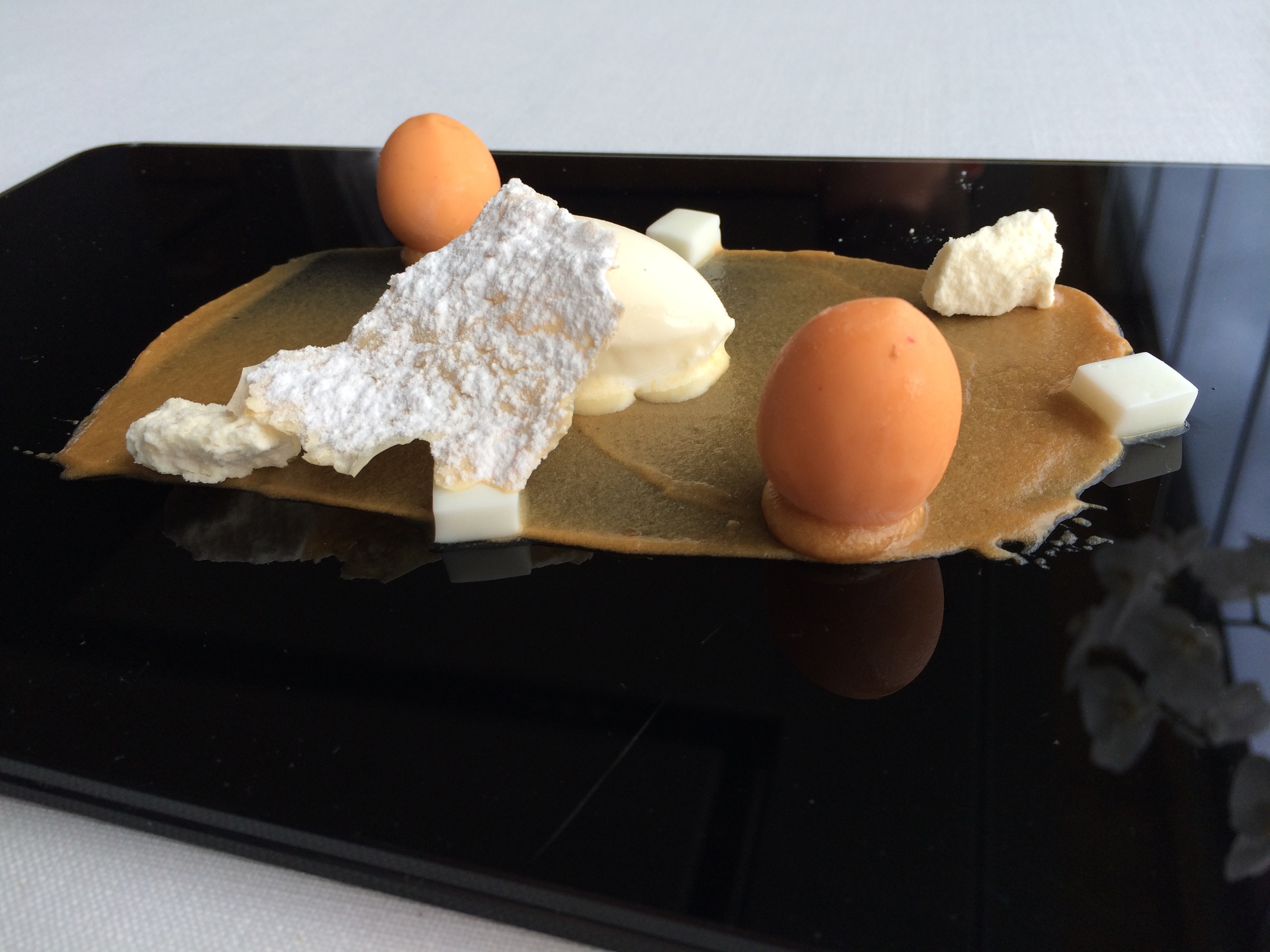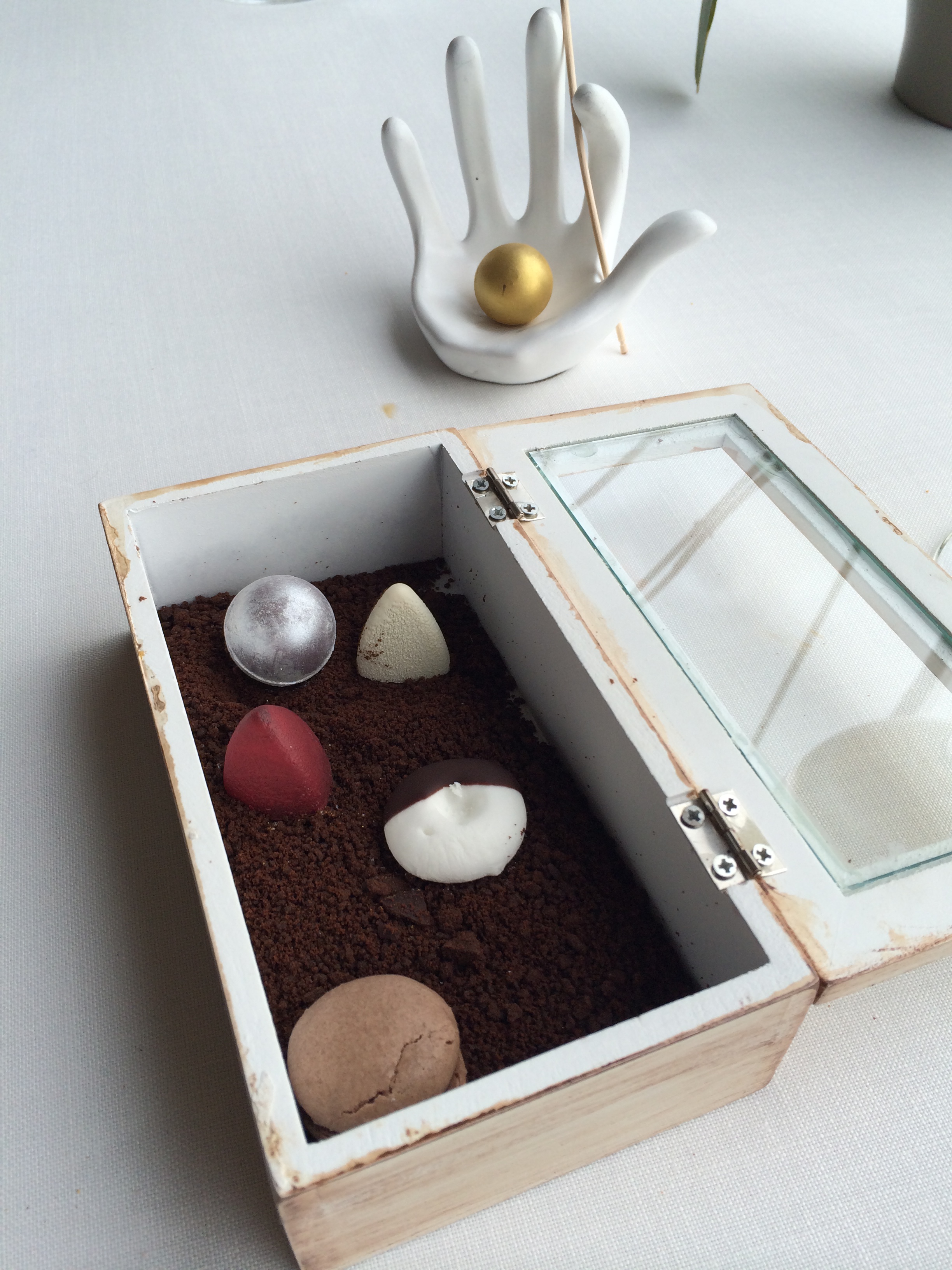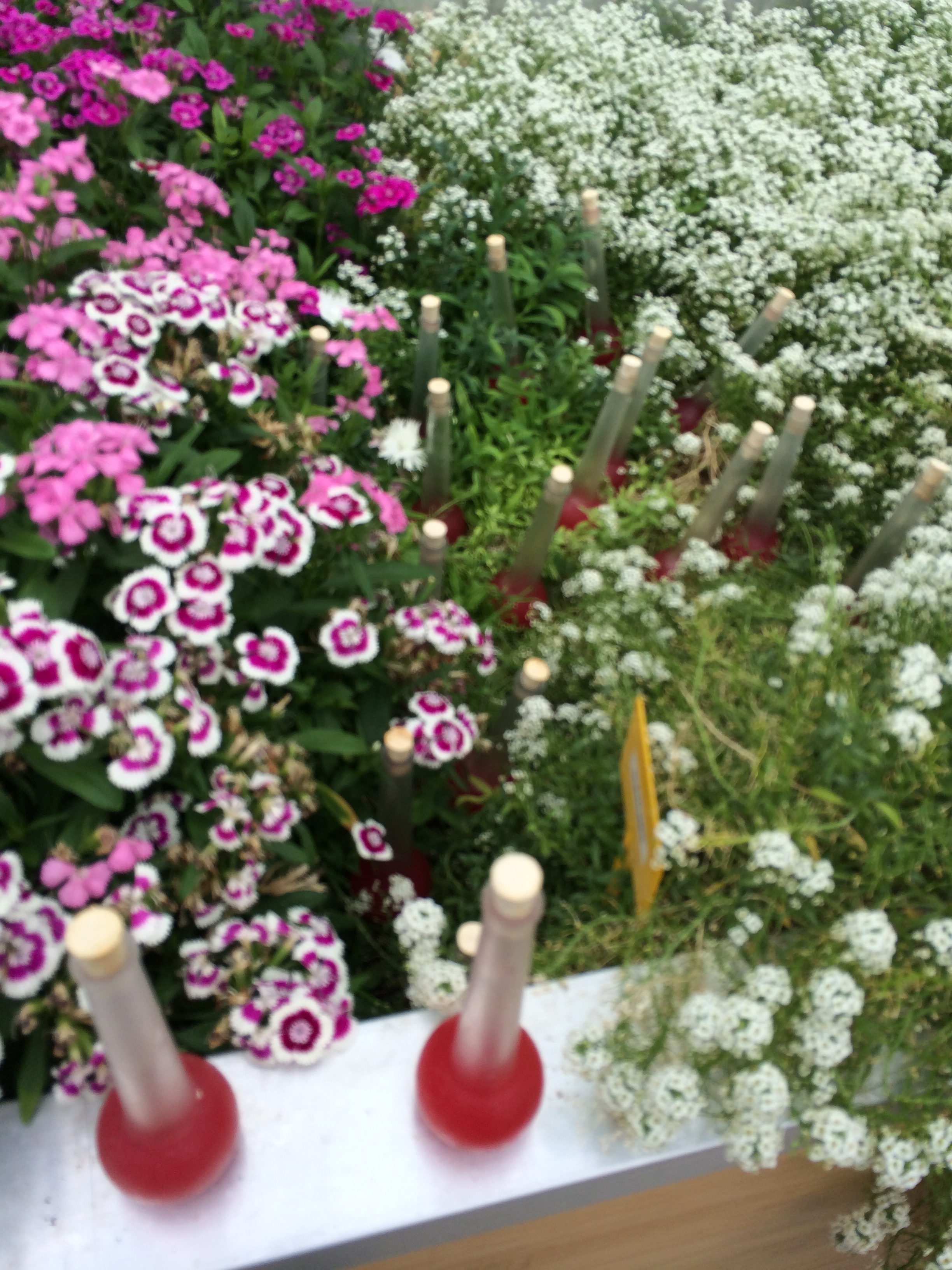He felt it like a water balloon popped on the back of his shin. He looked around and saw a small Mexican child laughing at him. The humor then spread like wildfire, faster than he could walk. The entire market seemed like it were united in a comedic uproar about how a child had hosed a foreigner.
The rest of the visit to the market was also fraught with novelty. At one point a large garbage truck of sorts was driving down the pedestrian alley. There should have been no conceivable way for this truck to have fit except by design. The purveyors continued with their day without pause, even though there was little in the world more claustrophobic than a large truck driving down a small pedestrian alley.
It was while this truck was driving down that the group of millenials had seen an instagramable mango. Most of the market was for locals, evidenced by the carcasses of lukewarm meat that lined the stalls. All the worse, Easter holidays likely made everything feel a few days older. The liveliness, which might have otherwise hidden the disorganisation was clearly lacking in the Easter tranquility, allowing the sad and disheveled nature of the market to percolate.
The store monger must have been surprised to have received an order of seven mangos, as he did not have enough sticks to impale each mango. He proceeded to make sticks from scratch. After the sticks were made, the mangos were spiked, peeled and cubed. The process felt like how a mother might prepare food for her child, not a commercial enterprise. Some twenty minutes later, the mango was found to be entirely average.
For whatever reason, spending Easter in Mexico felt like a thing of lore, and grander than, say, spending it in Rome. There is a pervasive old world allure to mirror days when the Catholic Church was more relevant. Mexico City today is the ecclesiastical embodiment of the belle epoque. It felt like history took a pause there, stuck in the less complicated times, unaffected by modern squabbles.
One morning he went alone to a storied institution called Nicos. In the glamorous Mexican restaurant scene, Nicos was decidedly restrained. It held onto an old world charm. Which was why he was pleasantly surprised when the waitress spoke passable english. He arrived before 11am, what is still clearly breakfast time for a city where lunches start at 1pm. He ordered the “dry soup” which might best be classified as a Mexican lasagna dish. But what is usually a masculine meaty display was instead made feminine by the fresh taste of seafood. What really raised the spirit was a Mexican coffee called ‘cafe de olla’, a coffee service meant for 4 people. To make the lady painstakingly grind cinnamon into coffee seems cruel, but a particularly unreliable man was the reason for his solo trip. He forged onward. The coffee was deeply concentrated, reminiscent somewhat of an espresso. Or perhaps more correctly a Turkish coffee. Sweetened and brightened with spices. A drink like this feels as indulgent as legal drinks can. It’s surprising that one can drink something so powerful with no ramifications, and without burning a $1,000 hole in the pocket book as would a bottle of wine that left a similar impression.
For most of the trip, he travelled with a group. The leader of the entourage was a sun-drenched serial traveller who enjoyed planning far out in advance, and did not like being seen as imperious given the prevailing gender roles of the day. Her friend from grade school was the only person to have a different alma mater to the rest of the group, and provided a refreshing departure from the group-think prevalent in graduates of the same school. She also had a wicked sense of humour. Another two ladies, roommates who were also food-centric travellers and budding wine-lovers, joined. One was quieter, less sardonic, and less predisposed to headaches than the other. They both wore contact lenses then turned into nerdy four-eyes at night. The men merit some discussion. The more reasonable of them was Toronto-based food lover who liked playing board games. The second was a self-proclaimed “comedian” and “artist” who enjoyed playing games on his phone while others engaged in interpersonal conversation. He generally carried the serious facial expression of an army conscript. One night this group of mostly single people attended a salsa club. There, the four young ladies attracted a fairly strong response from the locals. This last character, who was the most paternalistic of them, was assigned to dissuade engagement from the suitors. From hearsay, it became known that the suitors made it through quite easily, no thanks to this last gentleman, though no amount of public indecency was witnessed. Interestingly, the group was entirely single, so it would not be unlikely, that certain members of each gender held some interest for members of the opposite gender. However, after many long nights, there were not stories of romance to be told, at least none that are verifiable. Certain ideas may have been dreamt or contemplated, but not acted upon.
For once he traveled with a group that had an appetite as voracious as his. It was entirely unclear how the dainty travelers were able to eat such unconstrained volumes. At least three of the ladies showed no indication of their indulgence. On one particular day the entire time was spent sitting at two different restaurants, punctuated by a five minute walk between the two. As far as fine dining goes, the city was experiencing a culinary revival. South American cuisine rose in notoriety alongside with D.O.M. in Brazil in the 2000’s, but didn’t make headlines until Lima seemingly became the world’s greatest food city overnight by claiming three of the the top 50 restaurants in the word list. This inscrutable rise caused many people to question the veracity of these vaulted rankings. Certain commentators attributed the rise of South American cuisine to a re-split of the top 50 regions that helped include more restaurants from the region. Curiously the re-split occurred after Lima hosted the Latin America’s 50 Best awards, in 2013 and 2014, with the Peruvian tourism commission as a sponsor. Mexico City followed the coattails of Lima, claiming its own three top restaurants by 2015.
By most foodie assessments, the tasting menus of South America are hackneyed. Food that isn’t meant to be served in so many courses are aligned to a French concept designed for French cuisine. The three tasting menus of Mexico City fell flat footed. Lorea was potentially the most mis-priced and unimpressive, except for a pretty, smart, black corn dish that managed to be succulent and playful, and paired wonderfully with the barley tea, reminiscent of Japanese influences. This inventive dish was juxtaposed with a lamb confit dish that could be described as glorified barbacoa. Well done meat and tasting menus seldom go well together.
One night, at this institution, a man intruded on them quite rudely to remind them that there were other patrons at the restaurant. It was not entirely clear if he took issue with the decibels or the conversation topics. A nice Australian sounding patron assured them that it was fine.
Pujol had consistency problems with its dishes. Some were abundantly innovative like the huitlacoche, which reminded of squid ink risotto despite having no seafood. The aged mole was indeed special, and gained an unctuous asian fish sauce like flavour. Most of the items on the “Mar” menu fell flat. And indeed, so did some on the “Maiz” side.
Quintonil lacked most of the lustre of Pujol and Lorea, taking up a drab, dated space. It happened to be so uninviting that it would not provide menus for each diner to take home, which seemed like gastronomic blasphemy. Funny enough the food exhibited a greater level of consistency here than at the other two restaurants, after the appetizers. The eggplant, pork and chorizo dishes were particularly memorable.
One of the best restaurants in the city is Maximo Bistrot, which is more French than anything else, and has a confident and short list of very tasty dishes like asparagus, ravioli and crispy pork. The restaurants that seem to gain the most widespread appeal from knowing foodies are the simpler ones like Maximo and Contramar, which serves large cuts of seafood.
They didn’t limit themselves to the two reserved meals a day. Between the juice stops, churros and taco stands, meals could number into easily six a day. And by their childhood, few of them were predisposed to waste food, meaning most of the food ordered was consumed. The ‘street food’ of Mexico was not particularly inspiring. Sad stalls sat lonely in the streets. Lukewarm drinks were scooped out of large plastic containers. Sometimes these stalls were stationed next to big condom ads. Easter Sunday night was composed of taco hunting, with intermittent juices and churro stands. The city rests on Sunday nights, the taco places close, interrupting their furious eating schedule.
He searched for good wine. The best list was probably at Sud 777. They had, as an example, a 2003 vintage of Le Dix, a Chilean estate belonging to Lafite Rothschild. For natural wine, a French wine bar called Loup Bar had producers like Octavin, Riffault and Bichi; and a Japanese bar Le Tachinomi Desu had Matthiasson. The entourage had varying degrees of interest in wine; certain members imbued with a youthful exuberance were predestined for cocktails and spirits.
On the last day, he went to the rich neighbourhood of Tlalpan, to visit the Tiempo Tlalpan, a museum located in the house of a Swiss-Mexican restorer. Here restored clocks, record players, and jukeboxes date back to the 1800’s. They all function. As the hour turned to 6pm all the clocks struck their tune in unison. On the ancient gramophones, the restorer played a Grieg concerto he was particularly fond of. This was his first time hearing a gramophone. The restorer even made him an espresso as they chatted in broken English. It was from this vestige of culture he departed Mexico City, with a greater respect for the city. It was a city in the leagues of Rome and Madrid, more romantic than Sao Paulo, and grander than even Buenos Aires.


